Articles
Talking Philly Fighters, and Money

 There are excuses galore that fighters will use to avoid accepting certain fights. Here is a brief sampling: “We’re friends; we train in the same gym; I know his trainer and he seems like a good guy; I won't fight him in his backyard; he fired his strength trainer and I like the guy; he’s too tall; I cannot find video on him; why knock off another Philly fighter; he’s left-handed; let’s fight him later when it means something.” My favorite: “I heard he’s been in the gym.” Sorry, but what is a fighter supposed to do, not train?
There are excuses galore that fighters will use to avoid accepting certain fights. Here is a brief sampling: “We’re friends; we train in the same gym; I know his trainer and he seems like a good guy; I won't fight him in his backyard; he fired his strength trainer and I like the guy; he’s too tall; I cannot find video on him; why knock off another Philly fighter; he’s left-handed; let’s fight him later when it means something.” My favorite: “I heard he’s been in the gym.” Sorry, but what is a fighter supposed to do, not train?
Welcome to boxing in Philadelphia, 2014-style!
Ironically, things were not much better here in 1973 when The Spectrum got into the boxing business and hired J Russell Peltz to run the show. Reading about the state of boxing back then in old scrapbooks, I saw the same excuses. Of course, we still had Bad Bennie Briscoe, who fought anyone, anywhere, anytime, anyplace. But he was like an oasis in the desert. That must have been a transition year, because before that, at the Arena or Convention Hall, Philadelphia boxing was rockin’.
“In 1973, we ran about 17 shows at The Spectrum,” Peltz said. “We were hemorrhaging money. Only three of the 17 turned a profit and those were the three headlined by Briscoe. The other 14 finished in the red–way in the red. We had good fighters like Cyclone Hart, Boogaloo Watts, Willie Monroe, Sammy Goss, Tyrone Everett, Alfonso Hayman and on and on but trying to get them to fight each other was like pulling teeth. Near the end of 1973, Allen Flexer, who was the CFO, took me to lunch at the Blue Line Club at The Spectrum. Looking back on it, I believe the purpose of the meeting was for him to relieve me of my job. We sat and talked for a few hours and I told him we could be successful if I could make the local matchups everyone wanted to see.”
Peltz went out and posted notices on the walls of the local gyms about an upcoming meeting at Joe Frazier’s gym to discuss the situation.
“The place was packed that night,” he said. “I sat on the ring apron and everyone sat on chairs—some stood—in a semi-circle around me. I remember telling everyone that The Spectrum had the Flyers and the 76ers and the circus and concerts and the ice shows and that they certainly could survive without boxing and if they dropped the sport we’d be back at the broken-down Arena in West Philly and we’d be stuck in a time warp. I told them if they fought one another the crowds would turn out and the purses would go up and it would be a win-win situation for everyone. We went back and forth for more than an hour.
“When the meeting ended, Pop Bates, an old-timer who ran the Passyunk Gym, told his protégé, Jimmy Arthur, who managed welterweight Alfonso Hayman, to agree to let Hayman and North Philly’s William Watson settle their rivalry, which was 1-1. The major breakthrough came from Eddie Futch, who was in charge of the Cloverlay, Inc., fighters, which included Joe Frazier and Monroe. Yank Durham, who previously had managed and trained them, had died suddenly four months earlier. Yank was vehemently against local matchups, so, ironically, his death paved the way for the last golden age of boxing in Philadelphia. Futch, who three times put his welterweight Hedgemon Lewis in with Ernie “Indian Red” Lopez in Los Angeles, twice at the Olympic Auditorium and once at the Sports Arena for big money, understood what I was saying. Shortly after that, I was able to sign Monroe to fight Cyclone Hart, two dynamic middleweights who had risen through the ranks together.”
The meeting helped put a spark back in the local fight scene. It built the frame for these fighters to make a name for themselves. Something that I wish we could get through to managers and fighters that are currently on the scene.
“From 1974 through 1979,” ”Peltz said, “those six years, The Spectrum ranked up there with places like Madison Square Garden, and the Olympic and The Forum in Los Angeles.”
The Spectrum’s informal middleweight tournament in 1974 included Briscoe, Kitten Hayward, Watts, Monroe, Hart and Li’l Abner along with adopted out-of-towners Emile Griffith and Billy “Dyanmite” Douglas. Crowds ranged from 4,000 to 10,000 and The Spectrum became to go-to place on the East Coast. Junior lightweight rivals Sammy Goss, of Trenton, NJ, and Tyrone Everett, of South Philly, drew close to 10,000 for their showdown that year, won by the ill-fated Everett in spectacular fashion.
Briscoe and Hayward were the only two middleweights to challenge for world titles, but you have to remember that world-title shots were few and far between in an era where, for most of the time, there was only one champion and eight weight classes. Today there are four different world (alphabet) titles in 17 different weight classes, five if you include The Ring magazine.
If you look at The Ring magazine rankings in the April, 2014, issue, there is only one champion from Philadelphia (Danny Garcia) in all 17 weight classes and only one other fighter (Bernard Hopkins) in the Top 10 in any weight class. Talk about putting the past in perspective. In the 70’s there were six Philadelphia middleweights (plus the adopted Douglas) who were world-ranked at one time or another, a position they reached by fighting each another in their mutual backyard and creating a buzz throughout the city that will be etched in Philadelphia sports history forever.
The mother lode of local middleweight matchups came late in 1975 when Briscoe and Hart collided at Broad and Pattison. Over 11,000 people watched an all-action 10-round draw which the British-based weekly publication Boxing News rated the second best Fight of the Year behind the Thrilla in Manila between Muhammad Ali and Joe Frazier. Whew! Fighting on a percentage of the gate—remember those days—Briscoe earned $20,000.00 that night, Hart $15,000.00. Guess what those purses are worth today: $90,000.00 for Briscoe, $68,000.00 for Hart. No TV income, no bogus titles, just a good old-fashioned 10-round fight.
Their rematch six months later in the same ring drew an even bigger gate. Briscoe went home with $30,000.00 (worth $126,000.00 today) and Hart $25,000.00 ($105,000.00 today). It was a short night’s work for Briscoe, who knocked out Hart in the first round. I wonder how many non-champions are making that kind of money today for a main event without television or even with TV. Fighters hold out in hope of making big money but they don’t realize that without a fan base and without television, there is no big money. Believe me, no main-event boxer on ESPN 2, Fox Sports, Telemundo, UniMas or ShoBox makes that kind of money. Fighters need a local fan base to help generate bigger purses and the fan base grows when the fan is familiar with the fighter in each corner.
Later in the 1970s The Spectrum got into the light-heavyweight business, staging some of the best fights in the history of the 175-pound division featuring Matthew Franklin (Saad Muhammad), Marvin Johnson, Mike Rossman, Richie Kates, Jerry “The Bull” Martin, Yaqui Lopez, Jesse Burnett, Lonnie Bennett and Douglas, who by that time had moved up in weight. Franklin earned $20,000.00 beating Lopez and that’s worth $75,000.00 today. Nice!
So I can understand why the general public no longer shows much interest in the sport. Fans want to see competitive fights. From the beginning of time through the early 1980s, Philly fighters fought for more than money–they fought for pride. Hall-of-Fame bantamweight champion Jeff Chandler (right), of South Philly, once asked Peltz to get him someone better after Peltz had offered him a Spectrum 10-rounder with Jose Resendez, of Los Angeles, CA, when the then-unbeaten Chandler was moving into 10-rounders in 1979. Resendez was 10-8-1 and on his way to a career record of 14-39-3. Peltz acquiesced. On another occasion, after blowing away tiny Alberto Cruz in Atlantic City that summer, Chandler told Peltz never to embarrass him again in front of his fans by getting him someone who was not even close to Chandler’s skill level. When the opposition improved, so did Chandler and he won the WBA world title in 1980. Two years later, forced to fight Miguel Iriarte, a politically anointed No. 1 contender from Panama, Chandler mocked his pathetic opponent for eight rounds before dispatching him at Resorts International In Atlantic City.
“I wanted to embarrass the WBA,” Chandler said afterword. “I want to fight the best guys, not these phony challengers.” Chandler was not interested in the politics which had made the inferior Iriarte a mandatory challenger.
What I would give to deal with a fighter like him. They don’t come along like that anymore.
The author is a Temple University graduate who is now a part of Peltz Boxing. Follow us on twitter @Peltzboxing and @BAMBoxingInc
Articles
2015 Fight of the Year – Francisco Vargas vs Takashi Miura

The WBC World Super Featherweight title bout between Francisco Vargas and Takashi Miura came on one of the biggest boxing stages of 2015, as the bout served as the HBO pay-per-view’s co-main event on November 21st, in support of Miguel Cotto vs Saul Alvarez.
Miura entered the fight with a (29-2-2) record and he was making the fifth defense of his world title, while Vargas entered the fight with an undefeated mark of (22-0-1) in what was his first world title fight. Both men had a reputation for all-out fighting, with Miura especially earning high praise for his title defense in Mexico where he defeated Sergio Thompson in a fiercely contested battle.
The fight started out hotly contested, and the intensity never let up. Vargas seemed to win the first two rounds, but by the fourth round, Miura seemed to pull ahead, scoring a knock-down and fighting with a lot of confidence. After brawling the first four rounds, Miura appeared to settle into a more technical approach. Rounds 5 and 6 saw the pendulum swing back towards Vargas, as he withstood Miura’s rush to open the fifth round and the sixth round saw both men exchanging hard punches.
The big swinging continued, and though Vargas likely edged Miura in rounds 5 and 6, Vargas’ face was cut in at least two spots and Miura started to assert himself again in rounds 7 and 8. Miura was beginning to grow in confidence while it appeared that Vargas was beginning to slow down, and Miura appeared to hurt Vargas at the end of the 8th round.
Vargas turned the tide again at the start of the ninth round, scoring a knock down with an uppercut and a straight right hand that took Miura’s legs and sent him to the canvas. Purely on instinct, Miura got back up and continued to fight, but Vargas was landing frequently and with force. Referee Tony Weeks stepped in to stop the fight at the halfway point of round 9 as Miura was sustaining a barrage of punches.
Miura still had a minute and a half to survive if he was going to get out of the round, and it was clear that he was not going to stop fighting.
A back and forth battle of wills between two world championship level fighters, Takashi Miura versus “El Bandido” Vargas wins the 2015 Fight of the Year.
WATCH RELATED VIDEOS ON BOXINGCHANNEL.TV
Articles
Jan 9 in Germany – Feigenbutz and De Carolis To Settle Score

This coming Saturday, January 9th, the stage is set at the Baden Arena in Offenburg, Germany for a re-match between Vincent Feigenbutz and Giovanni De Carolis. The highly anticipated re-match is set to air on SAT.1 in Germany, and Feigenbutz will once again be defending his GBU and interim WBA World titles at Super Middleweight.
The first meeting between the two was less than three months ago, on October 17th and that meeting saw Feigenbutz controversially edge De Carolis on the judge’s cards by scores of (115-113, 114-113 and 115-113). De Carolis scored a flash knock down in the opening round, and he appeared to outbox Feigenbutz in the early going, but the 20 year old German champion came on in the later rounds.
The first bout is described as one of the most crowd-pleasing bouts of the year in Germany, and De Carolis and many observers felt that the Italian had done enough to win.
De Carolis told German language website RAN.DE that he was more prepared for the re-match, and that due to the arrogance Feigenbutz displayed in the aftermath of the first fight, he was confident that he had won over some of the audience. Though De Carolis fell short of predicting victory, he promised a re-vamped strategy tailored to what he has learned about Feigenbutz, whom he termed immature and inexperienced.
The stage is set for Feigenbutz vs De Carolis 2, this Saturday January 9th in Offenburg, Germany. If you can get to the live event do it, if not you have SAT.1 in Germany airing the fights, and The Boxing Channel right back here for full results.
Articles
2015 Knock Out of the Year – Saul Alvarez KO’s James Kirkland

On May 9th of 2015, Saul “Canelo” Alvarez delivered a resonant knock-out of James Kirkland on HBO that wins the 2015 KO of the Year.
The knock-out itself came in the third round, after slightly more than two minutes of action. The end came when Alvarez delivered a single, big right hand that caught Kirkland on the jaw and left him flat on his back after spinning to the canvas.Alvarez was clearly the big star heading into the fight. The fight was telecast by HBO for free just one week after the controversial and disappointing Floyd Mayweather Jr. and Manny Pacquiao fight, and Alvarez was under pressure to deliver the type of finish that people were going to talk about. Kirkland was happy to oblige Alvarez, taking it right to Alvarez from the start. Kirkland’s aggression saw him appear to land blows that troubled the young Mexican in the early going. Alvarez played good defense, and he floored Kirkland in the first round, displaying his power and his technique in knocking down an aggressive opponent.
However, Kirkland kept coming at Alvarez and the fight entered the third round with both men working hard and the feeling that the fight would not go the distance. Kirkland continued to move forward, keeping “Canelo” against the ropes and scoring points with a barrage of punches while looking for an opening.
At around the two minute mark, Alvarez landed an uppercut that sent Kirkland to the canvas again. Kirkland got up, but it was clear that he did not have his legs under him. Kirkland was going to try to survive the round, but Alvarez had an opportunity to close out the fight. The question was would he take it?
Alvarez closed in on Kirkland, putting his opponent’s back to the ropes. Kirkland was hurt, but he was still dangerous, pawing with punches and loading up for one big shot.
But it was the big shot “Canelo” threw that ended the night. Kirkland never saw it coming, as he was loading up with a huge right hand of his own. The right Alvarez threw cracked Kirkland in the jaw, and his eyes went blank. His big right hand whizzed harmlessly over the head of a ducking Alvarez, providing the momentum for the spin that left Kirkland prone on the canvas.
Saul “Canelo” Alvarez went on to defeat Miguel Cotto in his second fight of 2015 and he is clearly one of boxing’s biggest stars heading into 2016. On May 9th Alvarez added another reel to his highlight film when he knocked out James Kirkland with the 2015 “Knock Out of the Year”.
Photo by naoki fukuda
-
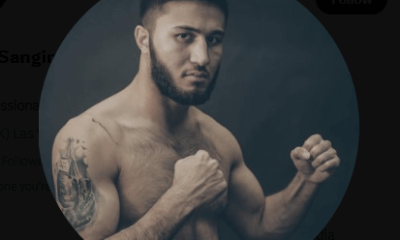
 Featured Articles4 weeks ago
Featured Articles4 weeks agoMekhrubon Sanginov, whose Heroism Nearly Proved Fatal, Returns on Saturday
-
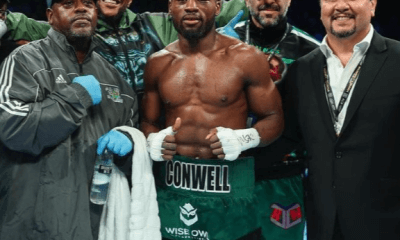
 Featured Articles4 weeks ago
Featured Articles4 weeks agoAvila Perspective, Chap. 322: Super Welterweight Week in SoCal
-
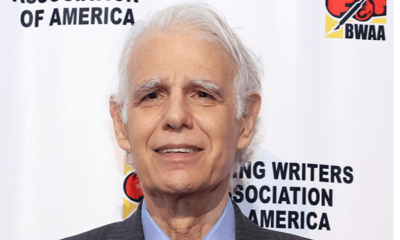
 Featured Articles4 weeks ago
Featured Articles4 weeks agoTSS Salutes Thomas Hauser and his Bernie Award Cohorts
-
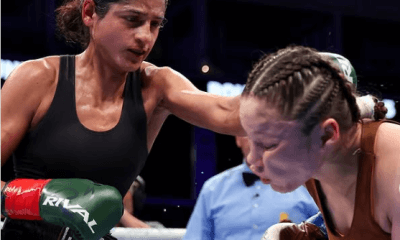
 Featured Articles3 weeks ago
Featured Articles3 weeks agoGabriela Fundora KOs Marilyn Badillo and Perez Upsets Conwell in Oceanside
-
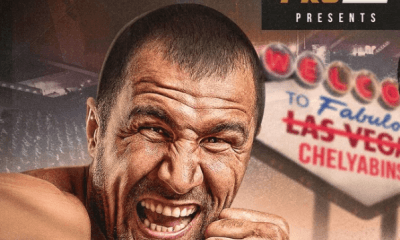
 Featured Articles3 weeks ago
Featured Articles3 weeks ago‘Krusher’ Kovalev Exits on a Winning Note: TKOs Artur Mann in his ‘Farewell Fight’
-

 Featured Articles3 weeks ago
Featured Articles3 weeks agoFloyd Mayweather has Another Phenom and his name is Curmel Moton
-
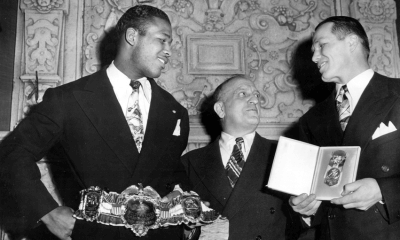
 Featured Articles3 weeks ago
Featured Articles3 weeks agoArne’s Almanac: The First Boxing Writers Assoc. of America Dinner Was Quite the Shindig
-
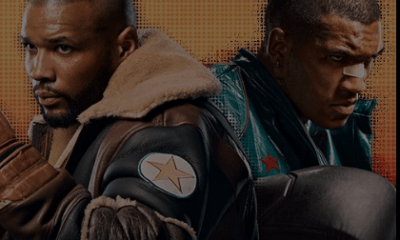
 Featured Articles3 weeks ago
Featured Articles3 weeks agoAvila Perspective, Chap. 323: Benn vs Eubank Family Feud and More















